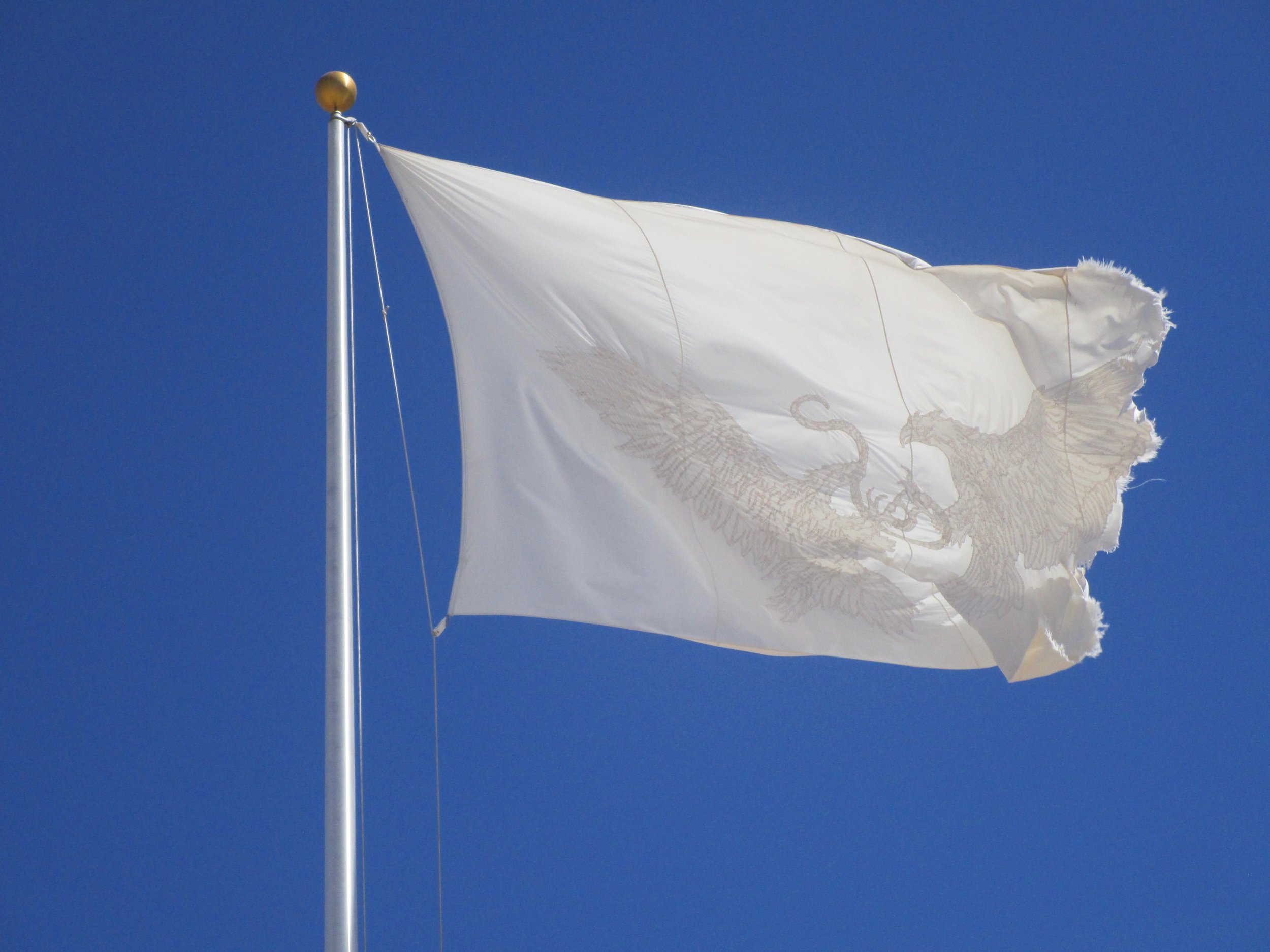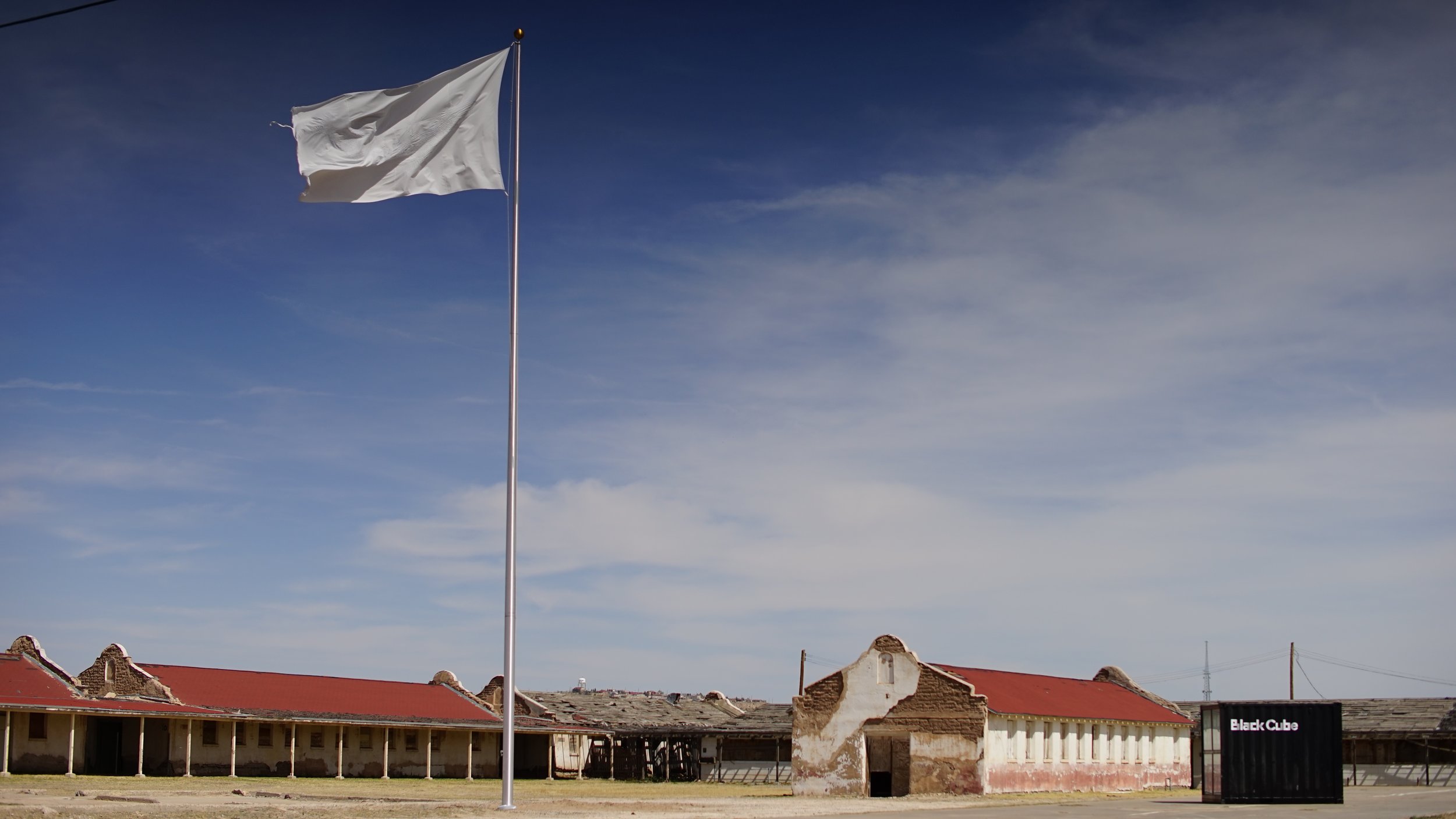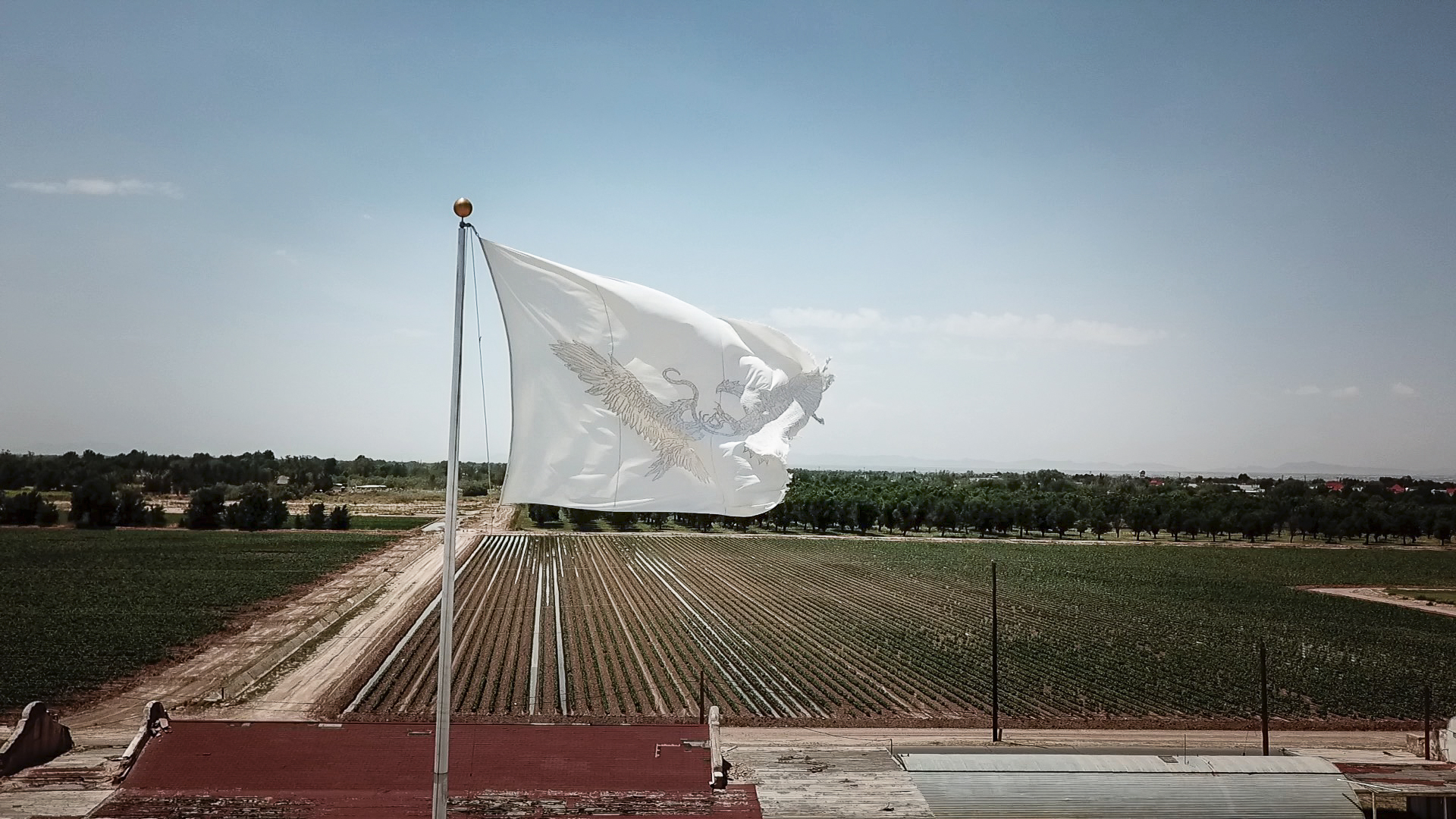Photos Courtesy: Adriana Corral, Anais Acosta, Dr. Yolanda Leyva and the Institute of Oral History at the University of Texas at El Paso
Unearthed: Desenterrado, site-specific, 2018, 60ft stainless steel flagpole, 18ft X 30ft embroidered golden and bald eagle white cotton flag.
Produced and Curated by Black Cube.
Unearthed: Desenterrado is a site-specific artwork that was installed at the Historic Rio Vista Processing Center. The processing center is one of the only facilities in existence in the country today, despite the Bracero Program being well-known as one of the largest foreign worker programs in U.S. history between the U.S. and MX. The program, which was established by the federal government during World War II, brought Mexican guest-workers into the U.S. to aid with farm labor and railroad industry shortages across America. Between the years of 1951 and 1964, Rio Vista Farm processed more than 80,000 Mexican workers per year. Those who were processed through Rio Vista Farm and others akin to it were subjected to humiliating medical treatment, psychological examinations and fumigations (specifically DDT). The United States benefited from cheap labor, necessitating the creation of programs meant to attract immigrants who relied on these low-wage jobs, and a codependency that is still practiced today was developed.
The Rio Vista Processing Center is located in Socorro, Texas and is surrounded by cotton fields. The white cotton flag flew for a three-month duration (typical lifespan of a cotton flag) and was visible from the neighboring cities of El Paso, Texas and Juarez, Chihuahua MX. Embroidered on either side of the flag is an illustration of a Mexican golden eagle and an American bald eagle—each emblematic of their respective nation’s patriotism.


